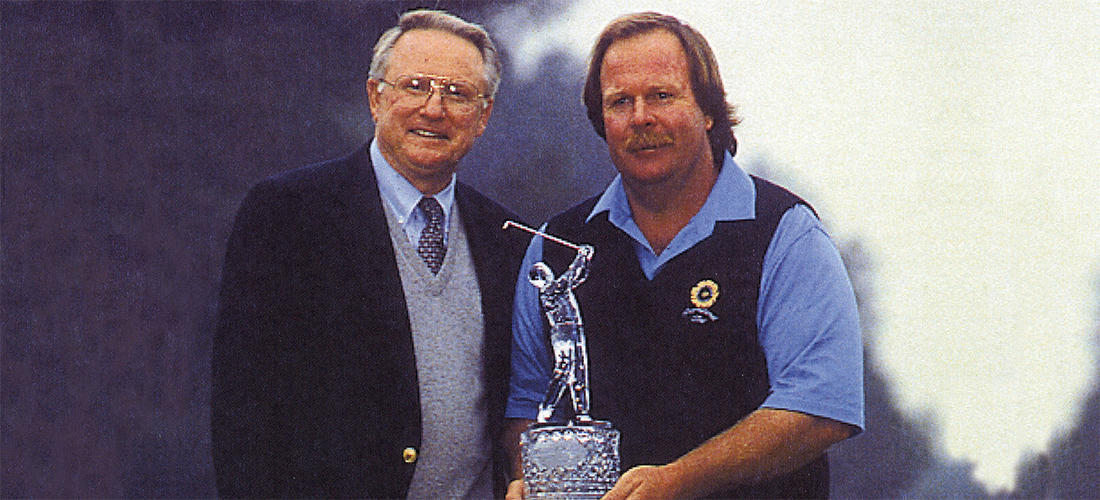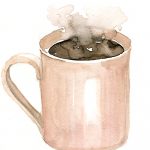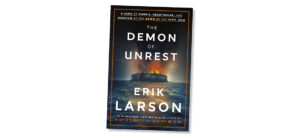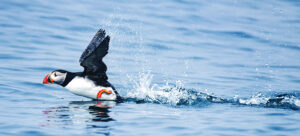
Big time tournaments return to Pinehurst No. 2
By Lee Pace
The phone rang in the office of Pinehurst Director of Golf Don Padgett Sr. one day in the summer of 1990. On the line was Deane Beman, the commissioner of the PGA Tour and a longtime brother with Padgett in the fraternity of golf administrative insiders.
“Padge, we’d like to bring our Tour Championship to Pinehurst next year,” Beman said of the season-ending “Super Bowl” of golf that in its first three years of existence had been played at Oak Hill, Pebble Beach and Harbour Town. “It will only cost you half a million dollars.”
“Thanks,” Padgett said. “As much as we’d love to have you, we’re not in a position to spend that kind of money.”
Padgett was three years into his tenure running the golf operations at Pinehurst, and owner Robert Dedman Sr. was six years into his initiative to rebuild what he called “a fallen angel,” a bastion of American golf history that had stumbled on hard times in the early 1980s and even been run by the bank for two years. Padgett’s charge from resort President and CEO Pat Corso was to “bring championship golf back to Pinehurst,” and the club in the previous three years had hosted a successful PGA Club Pro Championship and a U.S. Women’s Amateur.
But a half-million dollars to get the PGA Tour to town? That was beyond the pale.
A week later, Beman called back.
“OK, we’ll forgo the fee,” Beman said. “But we want to come the first week in October.”
Padgett and Corso conferred. Padgett told Corso he didn’t think the resort could afford to give up a prime fall weekend. Corso agreed, and Padgett told Beman he was sorry, but the dates were bad.
Beman called a third time.
“OK, when the hell can we come?” Beman asked.
“How about the last weekend in October?” Padgett answered. “Our peak season will be over, and the golf course and the greens will still be in good shape.”
“Deal,” Beman said.
And thus fell the first domino in what is now de rigueur around Pinehurst and the state of North Carolina — major championships on the No. 2 course. Since that Tour Championship (won by Craig Stadler on Nov. 3, 1991), Pinehurst No. 2 has been the venue for the U.S. Senior Open, three U.S. Opens, one U.S. Amateur and one U.S. Women’s Open. On the schedule are three more USGA events, including the 2024 Open.
“We could hardly have written a better script,” Corso says. “The weather was great. The golfers loved No. 2. The crowds were huge. It was everything we could have hoped for.”
“That Tour Championship was very important,” former USGA Executive Director David Fay says. “David Eger, as a former North & South Junior champion, and an unabashed fan of No. 2, did a masterful job in setting up the golf course. As it had been a few years since the ‘regular tour’ players had competed at No. 2, the Tour Championship confirmed — resoundingly — that No. 2 remained a great championship test.”
And it’s been 25 years.
“Wow — 25 years,” Corso muses today. “Where does the time go?”
I remember a snippet from the twilight hour on Monday, three days before the tournament commenced. The shadows of the towering pine trees were creeping across the fairway and green of the eighth hole as reigning British Open champion Ian Baker-Finch made his way around the course with Corey Pavin. They putted out on the eighth green and walked to the ninth tee. Baker-Finch nodded toward a couple of acquaintances standing nearby.
“This golf course is great,” he said. “I’m only halfway around and it’s one of the five best I’ve seen in this country. Maybe the world.”
Baker-Finch played that evening until it was pitch dark. “I haven’t been this excited since the British Open,” he said.
Stadler shot a 5-under-par score of 279, and only four players broke par for four rounds that week. Eger, a Charlotte native and former PGA Tour player then on the tour’s administrative staff, looked at the leader board on Sunday afternoon and noted that only Stadler and Russ Cochran were in red figures. “Two players under par,” Eger mused. “That looks like a U.S. Open.”
“I admit I wasn’t exactly sure what to expect,” Padgett said years later. “I had some concern that modern equipment and length would render some of the shorter holes defenseless. My son, Don II, told me, ‘Dad, don’t worry. That golf course will hold up fine.’ Don had played several years on the tour in the early 1970s and kept his finger on the pulse of the tour. He also played here frequently on his visits with the family. So I trusted his view and, sure enough, he was right.”
Everything worked well that week in late October and early November of 1991. The galleries were substantial. There was plenty of parking outside the village and a good shuttle system to get people to the golf course. The golf course stood up to the game’s top players, who relished the old-style challenge of Donald Ross’ design. That week led to Pinehurst getting the Tour Championship for the following year, won by Paul Azinger (only six players besting par for the championship). The USGA was watching closely as well, and since the week was an overwhelming success, it soon awarded Pinehurst the U.S. Senior Open for 1994.
“I have talked to every player, and there is nobody disappointed in having Pinehurst No. 2 back in the world of golf in the way it has been through its history,” Beman said. “This is a very special place. It is not going to disappoint anyone. It is an absolute delight to be here.”
The golf media waxed poetically on regional and national levels about the singular atmosphere of Pinehurst, the direction the club seemed to be headed under Dedman’s leadership, and the appeal of championship golf on a classic Ross-designed course. Corso still gets chills 25 years later remembering Jack Whitaker waxing poetically on ABC-TV and saying the golf tour was richer for having been to Pinehurst.
Ron Green Sr. in The Charlotte Observer hooked onto the Friday evening unveiling ceremony of a statue of Donald Ross as a watershed kernel.
“For an old hanger-around who happens to think this village is a little patch of heaven, there was a sense that it was more than an unveiling of the great architect’s likeness, that it was also an unveiling of Pinehurst today,” Green wrote.
Golf Digest’s Jaime Diaz, a New York Times correspondent then but a Moore County resident now, put Pinehurst in perspective in tying up a year in golf that saw the four majors contested on Augusta National, Hazeltine, Royal Birkdale and Crooked Stick, and the Ryder Cup on the Ocean Course at Kiawah.
“If the Tour Championship proved anything definitive, it is that Pinehurst No. 2 was the most evocative tournament arena of the year and should continue to have a major presence in American golf,” Diaz offered.
Throughout the two weeks of the 1991 and ’92 Tour Championships, the themes of introduction and renewal emerged.
Old fans of Pinehurst returned:
“I don’t know how they played this course in the early 1900s with hickory shafts,” said Chip Beck, a Fayetteville native and winner of the Donald Ross Memorial as a teenager. “Donald Ross must have been the toughest, hard-nosed architect in the world, because this course has stood the test of time.
“A course like this puts golf in perspective. It has maintained its history and tradition for so long. It’s like Fenway Park or Wrigley Field. It’s a standard to judge by.”
And new fans were born:
“This is the type golf course I could play every day of my life,” Greg Norman said.
“There is so much emphasis today on hitting balls 250 yards over water,” Baker-Finch said. “But this was how golf was meant to be played, the old style.”
“The whole experience is awesome — the village, the hotel, the golf course,” said Lee Janzen. “This is a golf town, all the way. It’s a great place to come, and I wish we’d play here every year.”
One of the most attentive spectators in 1991 was the USGA’s Fay. In the two years since the USGA had brought its Women’s Amateur to Pinehurst, USGA and Pinehurst officials had begun serious conversations about Pinehurst hosting a U.S. Open at some point in the late 1990s. Pinehurst, in fact, would make an official presentation in June 1992 to the USGA’s Championship Committee. The group voted in that meeting at Pebble Beach that an Open would, in fact, be set for Pinehurst, provided the club would rebuild what were considered substandard greens for elite competition in the summer, and the 1999 Open was announced the following June.
“I was very interested to see how the course would play for the Tour Championship,” Fay said. “I was interested to see if people would get romantic about a course. I was curious to see if time had passed it by. It hadn’t.”
The dominoes have been falling for quarter of a century. PS
Lee Pace’s first book on Pinehurst, Pinehurst Stories, was released just weeks before the 1991 Tour Championship.





